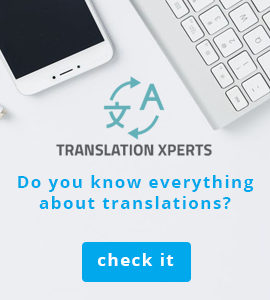How can translation software make life easier for translators?
First of all, a word of introduction. Translation software, also known as CAT (computer-aided translation) is a modern and developed system of tools used to improve the work of a translator. The market is full of options in this respect, and the selection is just a matter of a person’s preference.
The selection is wide and varied and includes software created by Trados, MemoQ, Transit and many others. These can work as standalone software or they can be integrated within Word editor. They can also be bought by both individuals and companies. What is important is that CAT software is by no means mechanical translation, but a tool that supports the translator. Some of the more common functions are dividing the text into segments, using translation memory or glossaries.
No agency today can function without CAT tools. It makes life easier not only for translators, but also for coordinators, project managers, and proof-readers. Upon receiving an order from the customer, the project coordinator checks the text using CAT software. It makes the whole process much easier as it shows how much text can be translated automatically. In this way, the customer can save a lot of money and the translator can save a lot of time, so it is a win-win situation for both parties. Like with any software, CAT software is not perfect and it requires double-checking in order to prevent errors or miscalculations.

One of the most powerful features of CAT software is Translation Memory. These are extracted bits of text that was pre-prepared and can be used for future reference in similar translation jobs. If a translator does the same (or similar) kind of texts, this feature might come in very handy and save plenty of time. Translation Memory is not only helpful for the translators themselves, but it shows that their translation background is well developed.
Another powerful element of CAT is glossaries. These are lists of words and expressions associated with a specific terminology or industry that may come in handy during specialized translation. Together with translation memory, these two can act as a powerful time-saver for the translator. Last but not least, CAT provides professionals with dividing the translated text into segments, so that the translator can see both the source text and the translated one and compare the two at any time. All these make even large texts processable within a relatively short period of time.
Taking all into account, using CAT tools is not only beneficial for the client and the translator, but also for the whole translation agency. The price estimation process becomes much easier, the customer pays less and the translator does not have to do excessive translation. What is the most important, however, is the fact that the quality of translation is not diminished with the use of CAT tools. On the contrary, with a properly created glossaries and the right translation memory modules implemented, the process is very close, if not better than an actual translator doing everything manually. Nobody who is planning to run a translation agency today should ignore the value of CAT software.











